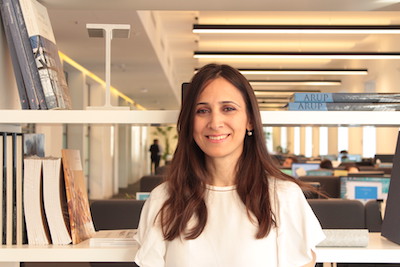“I cannot imagine designing a project without thinking about its impact on the world we live in.”
COVER STORY: ENVIRONMENTAL SUSTAINABILITY
Since 2011, architect Özlem Ayalp Ercolini has been working at the independent consulting firm Arup Italy, as part of the project and program management team. Her expertise is retail projects.
Özlem Ayalp Ercolini RC 01
What are circular economy principles, and how do they affect your work?
As defined by the Ellen MacArthur Foundation, circular economy aims to create a system that is restorative and regenerative by design. The design of materials, products or business models implements at least one of the three main principles of circular economy, while remaining neutral towards the other two.
- Principle 1: Design out waste and pollution. A mental shift is required to consider waste as a design fault.
- Principle 2: Keep products and materials in use. It means extending their lifespan through reuse, repair and remanufacture.
- Principle 3: Regenerate natural systems, favoring renewable energy and materials, preserving and enhancing natural resources.
I cannot imagine designing or managing a project without thinking about its impact on the world we live in and where my children will live in the future.
What do you recommend to RC students who are interested in architecture and sustainable design?
When studying architecture, interest in sustainable design is a natural consequence in this century. My recommendation would be to be curious and continue looking in the ways RC teaches.
Published August 2021




